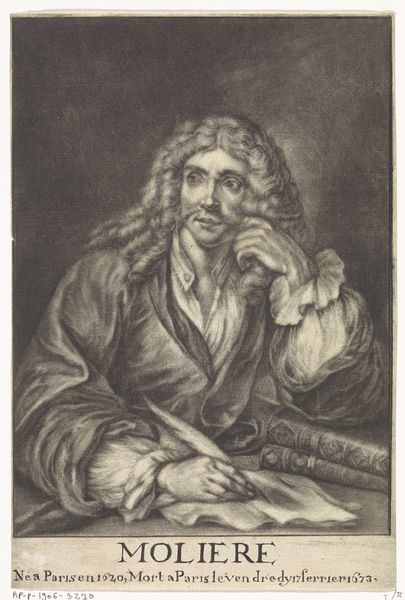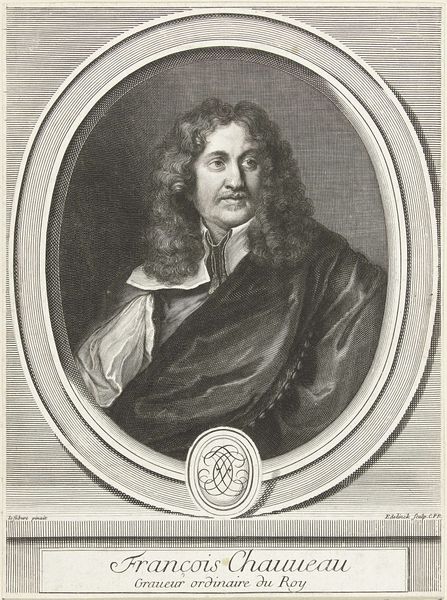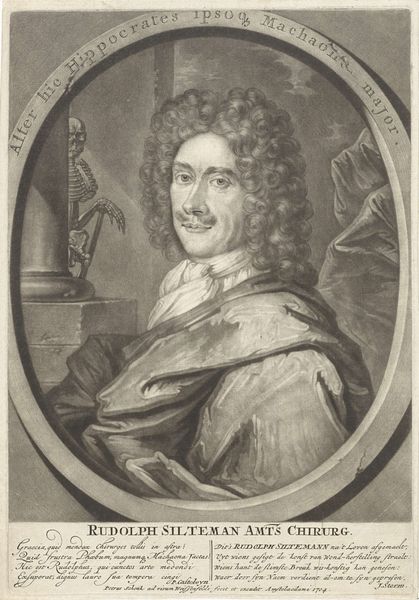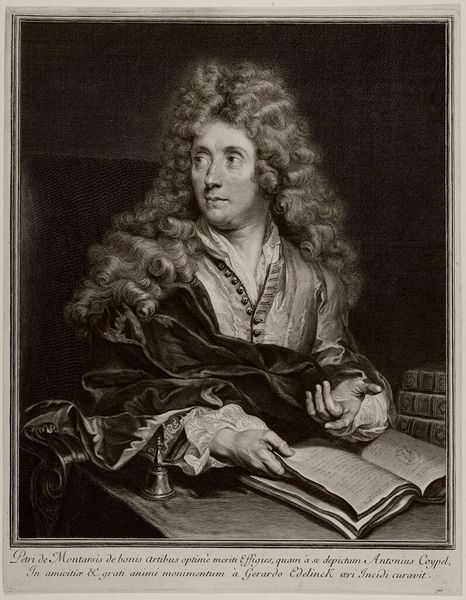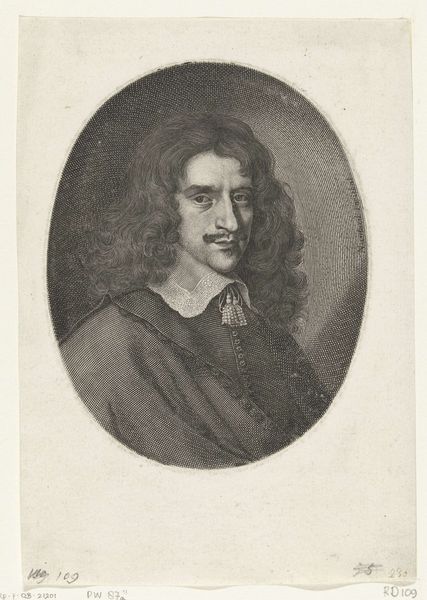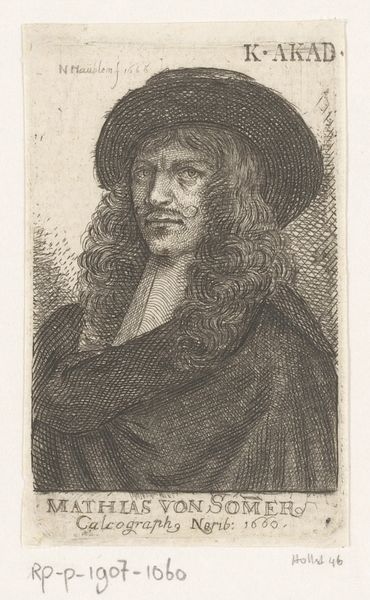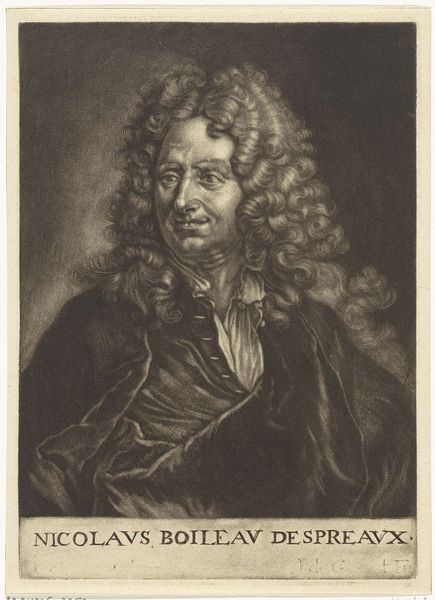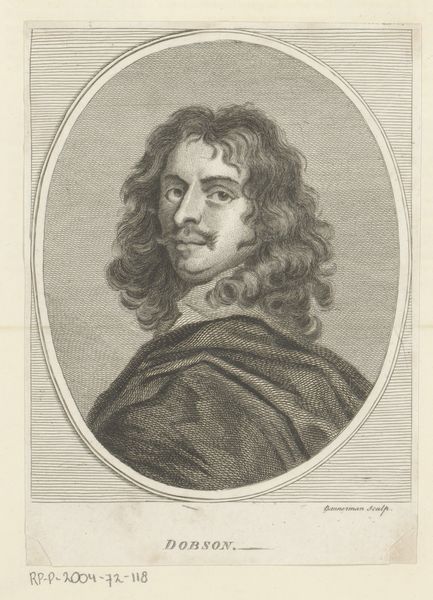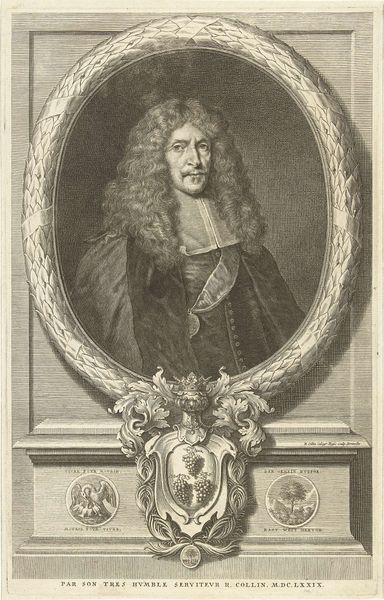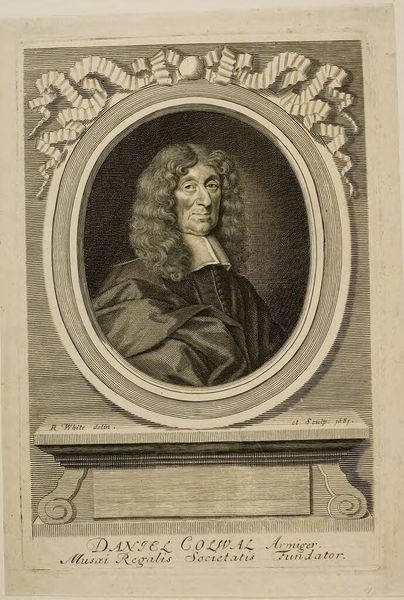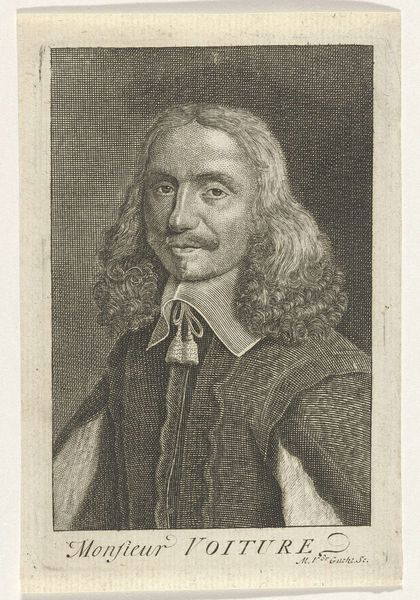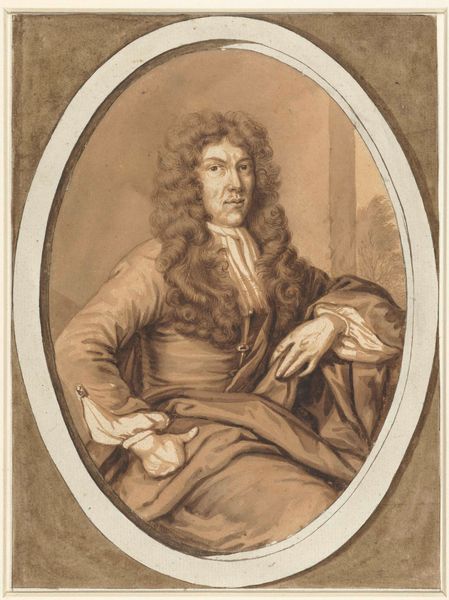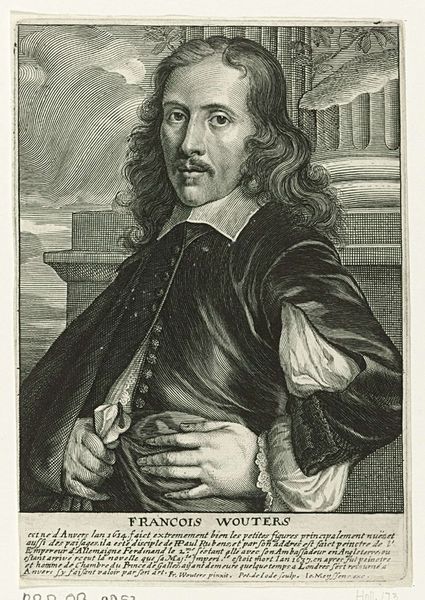
print, engraving
#
portrait
#
baroque
# print
#
history-painting
#
engraving
Dimensions: height 122 mm, width 68 mm
Copyright: Rijks Museum: Open Domain
Curator: Here we have Jan Punt's 1740 engraving, "Portret van toneelschrijver Jean Baptiste Poquelin Molière," held at the Rijksmuseum. It’s a powerful depiction of the celebrated playwright. Editor: The density of lines creates a somber mood, wouldn't you agree? All those tight, controlled marks give a weighty, contemplative air to Molière. Curator: Absolutely. The use of engraving, that precise linear structure, adds to the sense of intellectual rigor we associate with Molière’s plays. Notice how Punt employs the varying density of lines to model form and texture, especially in rendering the voluminous wig. Editor: But consider the context of 1740. Molière was long deceased. Punt's choice of the Baroque style speaks to how Molière was being memorialized in a way that emphasized hierarchy and order at a time of increasing social upheaval. His comedies, though critical, functioned within established power structures, making them palatable for the elite. Curator: A fine point, and yet, observing his hand—the one poised with the quill above the paper—there’s an incredible delicacy of line, rendering the fabric of the sleeve as meticulously as his very act of creation. Look closely and tell me it doesn’t evoke a feeling of creative force. Editor: It’s impossible to divorce the act of creation from the systems that supported it, though. I would propose that seeing those systems in action only amplifies my reading of Molière. Also, this portrait, with its somber tones and posed formality, makes me think of performativity and class anxieties of that time. How much did image making inform a man's place in the societal construct? Curator: That’s precisely where the brilliance of this work lies: it encapsulates Molière, the man of the theatre, but does it with careful control of line and form to become a testament to his intellect as well. Editor: A fascinating exploration, certainly giving us plenty to think about regarding Molière’s legacy. Curator: Indeed, a portrait to linger with for further explorations into the artist and his work.
Comments
No comments
Be the first to comment and join the conversation on the ultimate creative platform.
